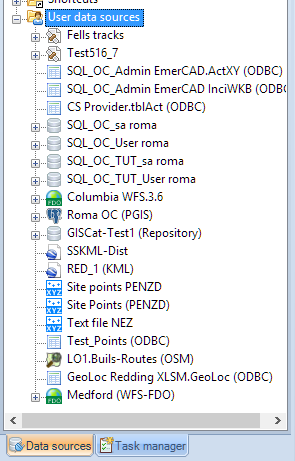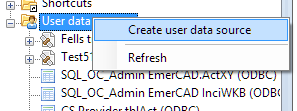Spatial Manager Desktop™ - FAQs: Data sources
Introduction
- Objective of this section
- To become familiar with the different methods defined in Spatial Manager Desktop™ to access spatial data (basic)
- Topics in this section
- Disk drives (files): disk drives or local and network folders
- Shortcuts (files): definition and edition of access to folders
- User data sources (UDS - files or databases): definition and edition of UDSs
- Data sources properties: differential icons and properties
What are the User Data Sources (UDSs) in Spatial Manager Desktop™?
UDSs are the way you can connect with spatial database servers and also the way you can define the path to a particular spatial data file and its parameters. You can access to UDSs through the "Data sources" panel
How can I define a new User Data Source (UDS) in Spatial Manager Desktop™?
You can define new UDSs using the right-click menu over the "User data sources" paragraph, in the "Data sources" panel
When you define an UDS to connect with a particular spatial database server, you will select the appropriate Provider for this server, the connection parameters for the server and the new UDS name. When you define an UDS to access to a particular spatial data file, you will select also the appropriate Provider for this file, the file itself, the file parameters and the new UDS name. All these data are saved, into your application configuration, until you want delete it
File:DS-3.PNGFile:DS-4.PNGFile:DS-5.PNG

